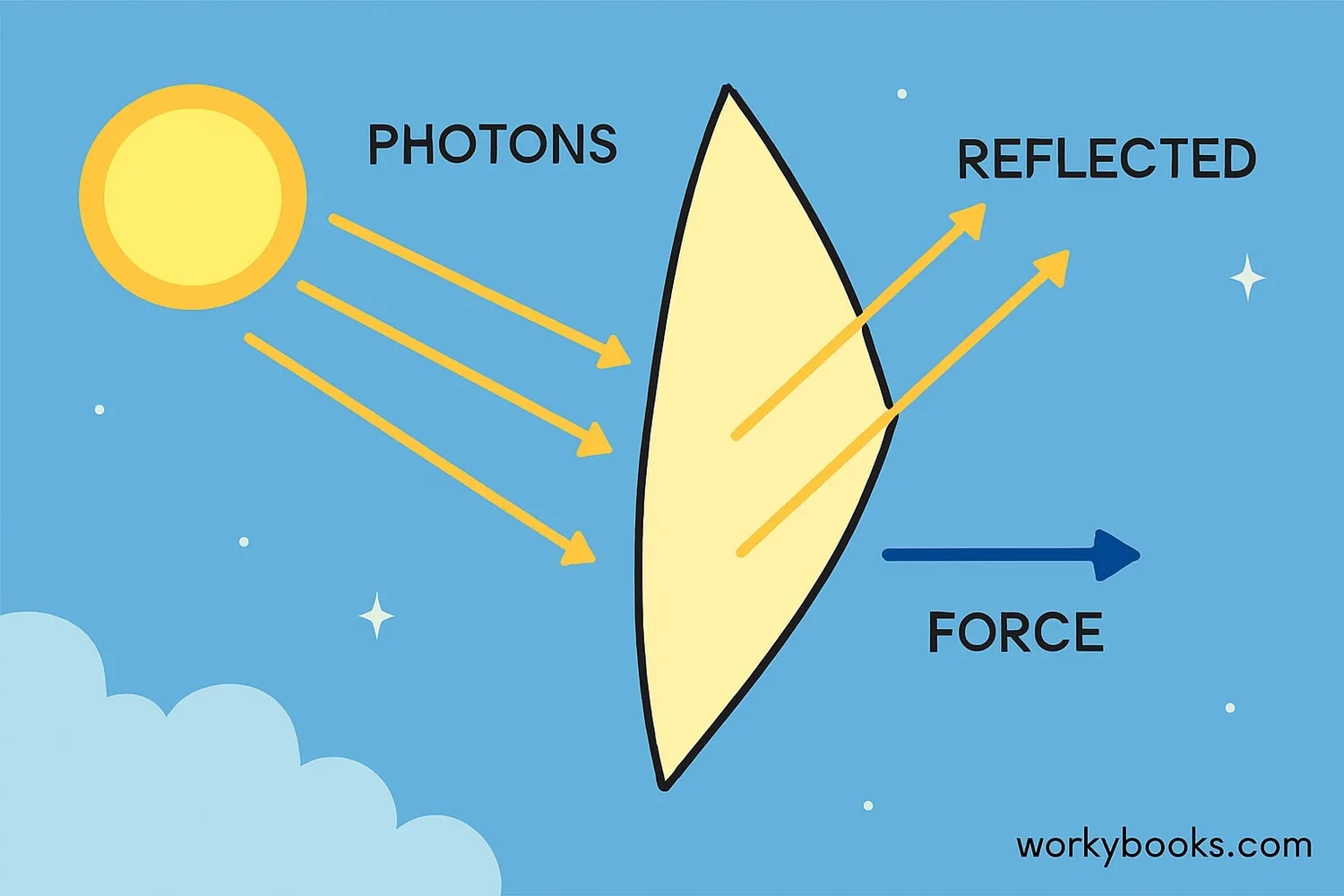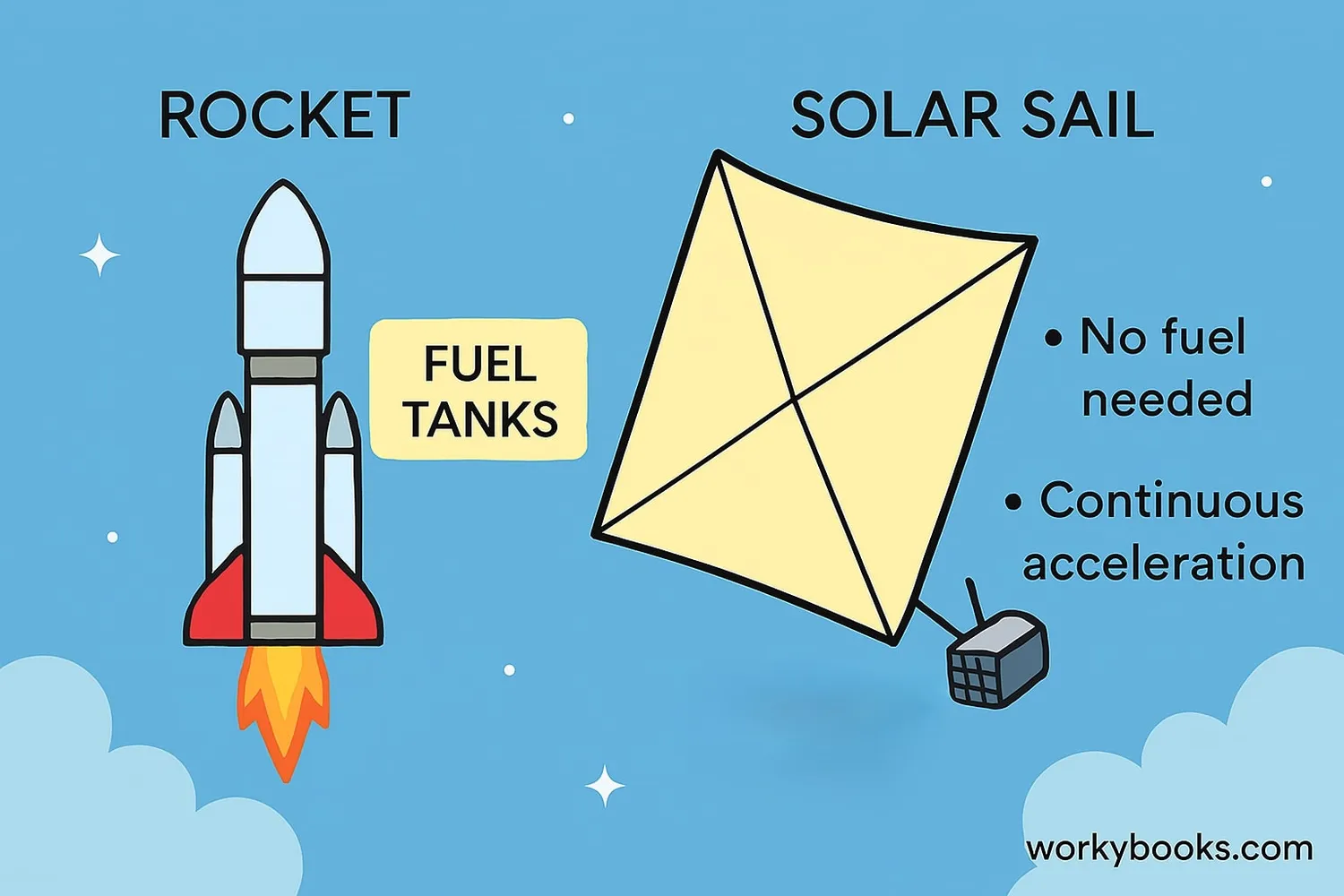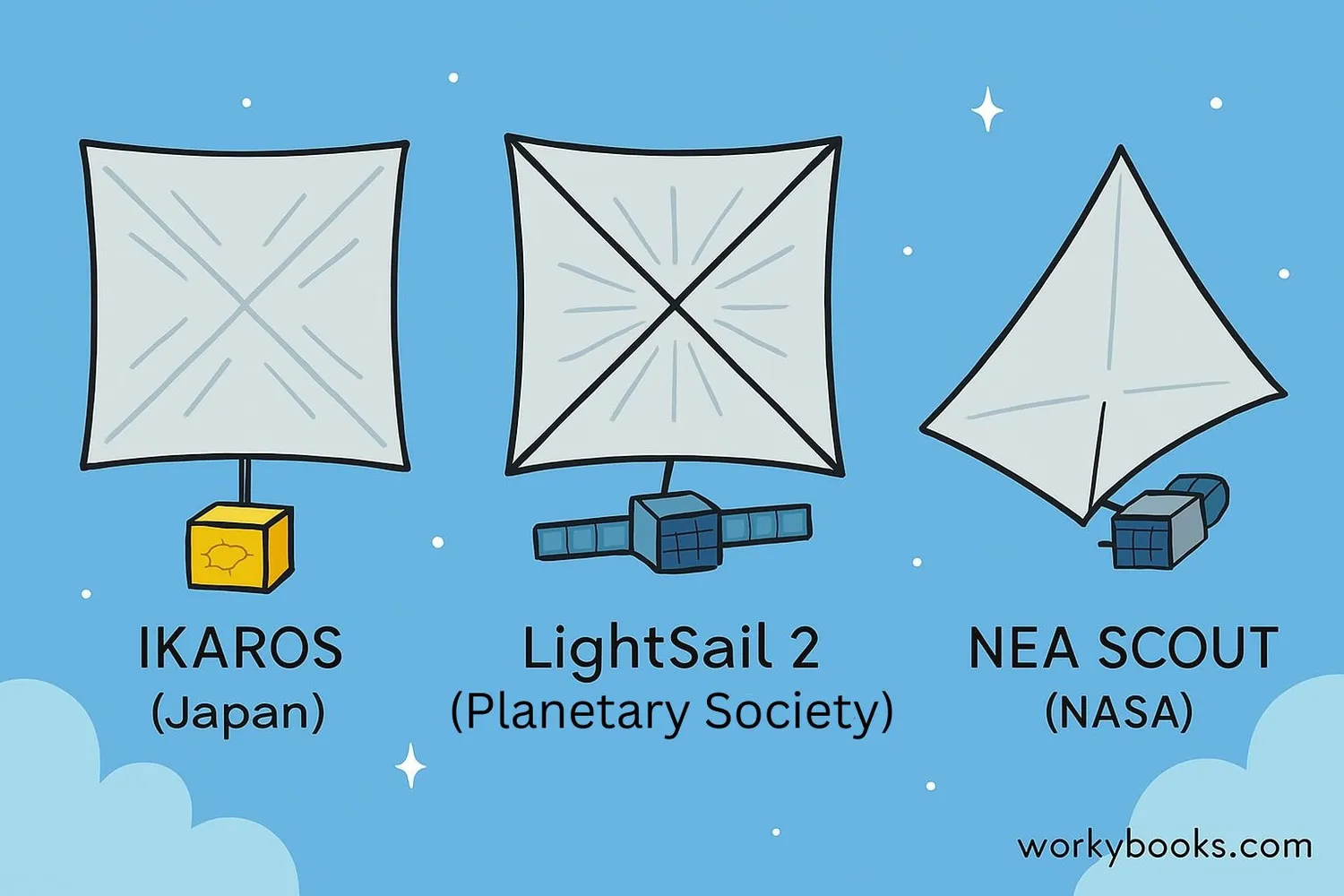Solar Sails - Definition, Examples, Quiz, FAQ, Trivia
Discover how spacecraft can sail through space using sunlight!
What is a Solar Sail?

A solar sail is a special way to move spacecraft through space without using rocket fuel! Just like sailboats use wind to move across water, solar sails use sunlight to move through space.
Solar sails are made of super-thin, reflective material that catches the energy from sunlight. When photons (particles of light) from the Sun bounce off the sail, they give the spacecraft a tiny push. This push is very small, but over time it can make the spacecraft go very fast!
Space Fact!
Solar sails can be as large as a football field but thinner than a human hair!
How Solar Sails Work

Solar sails work because of something called light pressure. Even though light particles (photons) have no mass, they carry momentum. When these photons bounce off the reflective sail, they transfer some of their momentum to the spacecraft, giving it a gentle push.
Here's the step-by-step process:
Sunlight Travels
Photons travel from the Sun through space
Hit the Sail
Photons hit the reflective sail surface
Bounce Off
Photons bounce off the sail
Push Forward
The bounce creates a small push
Constant Acceleration
Continuous push speeds up the spacecraft
This process is similar to how wind pushes a sailboat, but instead of wind, solar sails use sunlight. The push from sunlight is very gentle - about the same as the weight of a paperclip resting on your hand - but in space where there's no friction, this tiny push can build up to high speeds over time!
Why Use Solar Sails?

Solar sails offer special advantages for space exploration:
No Fuel Needed
Once deployed, they work for years without fuel
Continuous Acceleration
Keep speeding up as long as sunlight hits them
Cost Effective
Lighter and cheaper than fuel-based systems
Solar sails are perfect for missions that need to:
• Travel to distant planets
• Stay in unusual orbits
• Explore for many years
• Carry light scientific instruments
While they start slowly, solar sails can eventually reach incredible speeds - much faster than traditional rockets! This makes them ideal for long journeys through our solar system and even to other stars.
Speed Fact!
A solar sail could reach Pluto in just 5-6 years compared to 9+ years for traditional rockets!
Solar Sail Missions

Several exciting solar sail missions have already flown in space:
IKAROS
Japan's 2010 mission - first successful solar sail in interplanetary space
LightSail 2
Launched in 2019, successfully raised its orbit using sunlight
NEA Scout
NASA's mission to visit a near-Earth asteroid using a solar sail
These missions have proven that solar sailing really works! Scientists are now planning even more ambitious solar sail missions:
• Missions to study the Sun up close
• Exploring asteroids and comets
• Long-duration missions to the outer planets
• Even interstellar missions to other stars!
The future of space exploration might very well be powered by sunlight!
Solar Sail Quiz
Test your solar sail knowledge with this quiz! Answer all 5 questions to see how much you've learned.
Frequently Asked Questions
Here are answers to some common questions about solar sails:
Solar Sail Trivia
Discover some amazing facts about solar sails!
Super Thin Material
Solar sails are made of material thinner than human hair! Some are only 3-5 microns thick - that's about 1/20th the thickness of a sheet of paper!
Ancient Idea
The concept of solar sails was first imagined in the 1600s by astronomer Johannes Kepler! He observed comet tails being pushed by sunlight and imagined using this force for space travel.
Speed Champions
Solar sails hold the record for fastest human-made objects! In theory, they could reach 20% the speed of light - fast enough to reach Alpha Centauri in just 20 years!
Interstellar Dreams
Scientists are designing solar sails for missions to other stars! Projects like Breakthrough Starshot plan to send tiny spacecraft to Alpha Centauri using powerful lasers pushing solar sails.


